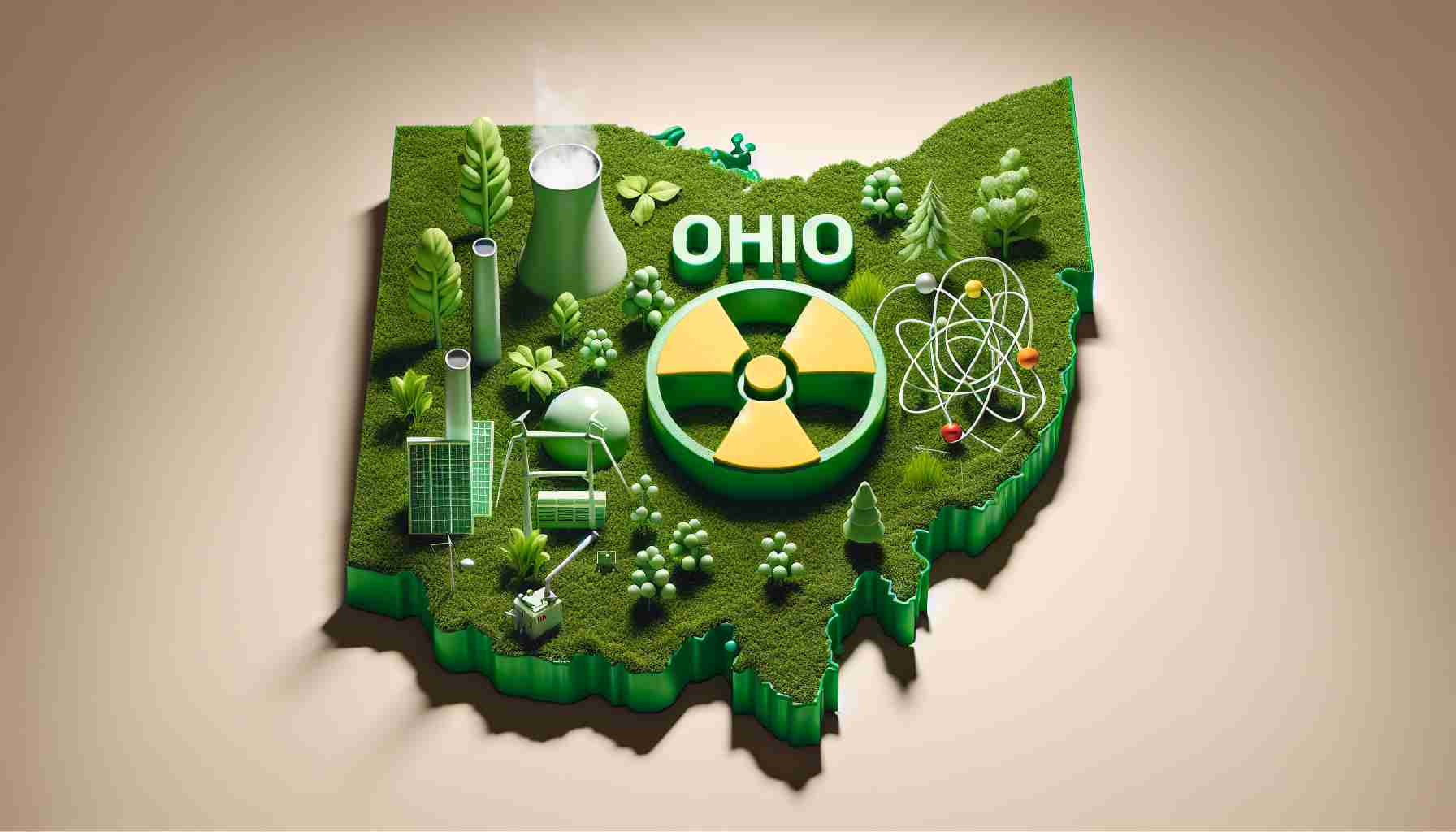
Ohio’s environmental landscape is undergoing a significant transformation with a contentious new law. House Bill 308, recently signed into law, adds nuclear power to Ohio’s definition of “green” energy. The law’s sponsors argue that it aims to position Ohio as a favorable location for nuclear research and innovation. However, concerns have been raised about the broader repercussions of this classification.
Critics, including members of various environmental organizations, worry that this redefinition could mislead the public and redirect financial resources away from renewable energy initiatives. The opposition emphasizes that the legislation doesn’t promise any actual financial benefits but simply rebrands nuclear energy.
Faced with the backdrop of House Bill 6, which undermined the state’s renewable energy standard, opponents warn that this change could undermine future clean energy efforts. Additionally, they argue that labeling nuclear energy as “green” could provide cover for private corporations to achieve climate goals without investing in more sustainable alternatives like solar or wind power.
There is concern among environmental advocates that such actions could lead to discrepancies in how energy classifications are applied, especially with model legislation being introduced elsewhere that seeks to define both natural gas and nuclear energy as “green.” The passage of House Bill 308 reflects a larger trend, stirring debates over the true meaning of clean energy in Ohio’s future.
Ohio’s New Green Energy Law: The Pros, Cons, and Implications of House Bill 308
Understanding House Bill 308
Ohio has recently passed House Bill 308, which redefines “green” energy to include nuclear power. This law has been promoted by its sponsors as a step towards enhancing Ohio’s position as a center for nuclear research and innovation. However, its implications for both the environment and the renewable energy landscape are sparking widespread debate.
Pros of House Bill 308
1. Support for Nuclear Research: By classifying nuclear energy as “green,” Ohio aims to attract more investment in nuclear research and technology. This could foster innovation in safety and efficiency in nuclear power generation.
2. Diverse Energy Portfolio: The inclusion of nuclear power could diversify Ohio’s energy sources, potentially leading to greater energy stability and resilience against fluctuating fossil fuel prices.
3. Carbon Emissions: Proponents argue that nuclear energy produces minimal carbon emissions compared to fossil fuels, which can contribute to the state’s overall goals of reducing greenhouse gases.
Cons of House Bill 308
1. Misleading Classification: Critics contend that labeling nuclear energy as green could mislead consumers and policymakers about the sustainability of different energy sources. This potential confusion may result in misallocated funding away from truly renewable sources like wind and solar energy.
2. Impact on Renewable Energy Initiatives: Environmental advocates fear that this rebranding of nuclear energy could undermine financial support and investments in renewable energy initiatives, delaying the transition to a sustainable energy future.
3. Corporate Incentives: There are concerns that corporations may exploit this new classification to appear environmentally friendly without making meaningful investments in renewable technologies.
Key Features and Public Concerns
– Public Perception: The way nuclear energy is now perceived may lead to a lack of public support for true green technologies, which can have long-term ramifications for renewable energy adoption in Ohio.
– Legal Precedents and Trends: The passage of House Bill 308 is part of a wider trend where other states have attempted to similarly redefine energy classifications. This could set a precedent affecting how energy is regulated across the country.
Insights and Market Analysis
As Ohio navigates its energy transition, the legal reclassification of nuclear power could influence market dynamics. If more states adopt similar measures, it could alter investment flows in energy innovation. This trend poses a challenge to clean energy advocates who seek to prioritize the development of renewable resources.
Sustainability Considerations
While nuclear power is often touted for its low carbon footprint, issues of nuclear waste management and the environmental impact of uranium mining raise questions about its long-term sustainability. The discussion surrounding House Bill 308 must take these factors into account, highlighting the need for a holistic view of what constitutes green energy.
What’s Next?
Looking ahead, Ohio’s energy policies will likely continue to evolve. Stakeholders, including environmental groups, policymakers, and energy companies, will need to engage in ongoing dialogues to define a sustainable energy future that prioritizes both reliability and environmental integrity.
For more information on Ohio’s energy landscape and updates on renewable initiatives, you can visit Ohio Energy Resources.
Conclusion
House Bill 308 represents a pivotal moment in Ohio’s environmental policy. While it opens doors for nuclear innovation, the debate it has sparked emphasizes the importance of transparency and commitment to true sustainable practices in energy production. As the state moves forward, the balance between diverse energy solutions and genuine renewable initiatives will be crucial in shaping Ohio’s energy future.



